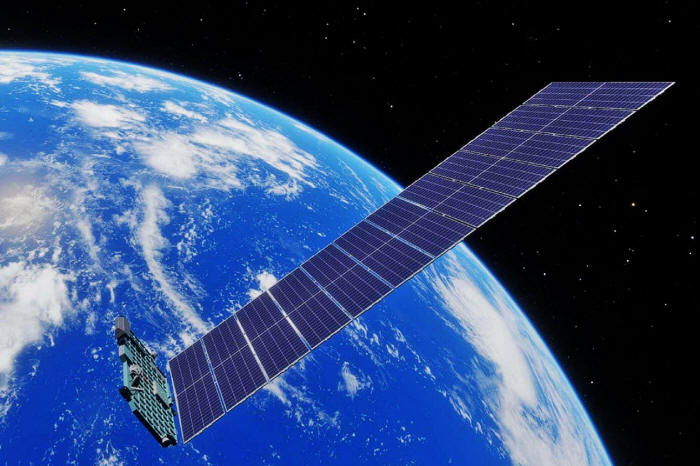|
by Jonathan O'Callaghan
Article also
HERE...
of a Starlink
satellite in orbit. so many satellites orbiting Earth as there are today, thanks in part to the launch of mega constellations like SpaceX's Starlink Internet service, and now we are learning just how the sun's activity can affect them...
During these periods, increased eruptions from
the sun can create geomagnetic storms that heat our planet's
atmosphere, causing it to swell outwards in size and increasing drag
on satellites. Now, Denny Oliveira at NASA's Goddard Space Flight Center in Maryland and his colleagues have investigated how much of an effect this was having on Starlink.
During solar maximum, the lifetime of a satellite could be reduced by up to 10 days, the researchers say.
But there are also several re-entries each week, and the constellation is constantly replenished.
Between 2020 and 2024, 523 Starlink satellites were tracked re-entering our atmosphere, where they are designed to entirely burn up.
Some Starlink satellites are purposefully lowered into the atmosphere at the end of their life, while others fall naturally under atmospheric drag when they fail.
Oliveira found that during the most severe recent geomagnetic events, when 37 Starlink satellites re-entered, satellites orbiting below 300 kilometers re-entered after around five days, down from more than 15 days.
Sean Elvidge at the University of Birmingham, UK, says this effect could benefit satellite operators like SpaceX by removing dead satellites from orbit more quickly that could otherwise pose a danger to other satellites.
However, it could limit our ability to operate satellites in orbits below 400 kilometers, known as very low Earth orbit.
There is also a possibility that quicker re-entries could make it less likely that the satellites will completely burn up in Earth's atmosphere, says Oliveira.
In August 2024, a 2.5 kilogram piece of a Starlink satellite was found on a farm in Saskatchewan, Canada, the only known instance of any piece of Starlink satellite surviving re-entry according to SpaceX.
Lawler, who lives in Saskatchewan, says she worries that more satellite debris might have made it to the ground elsewhere.
SpaceX didn't respond to a request for comment...
|


